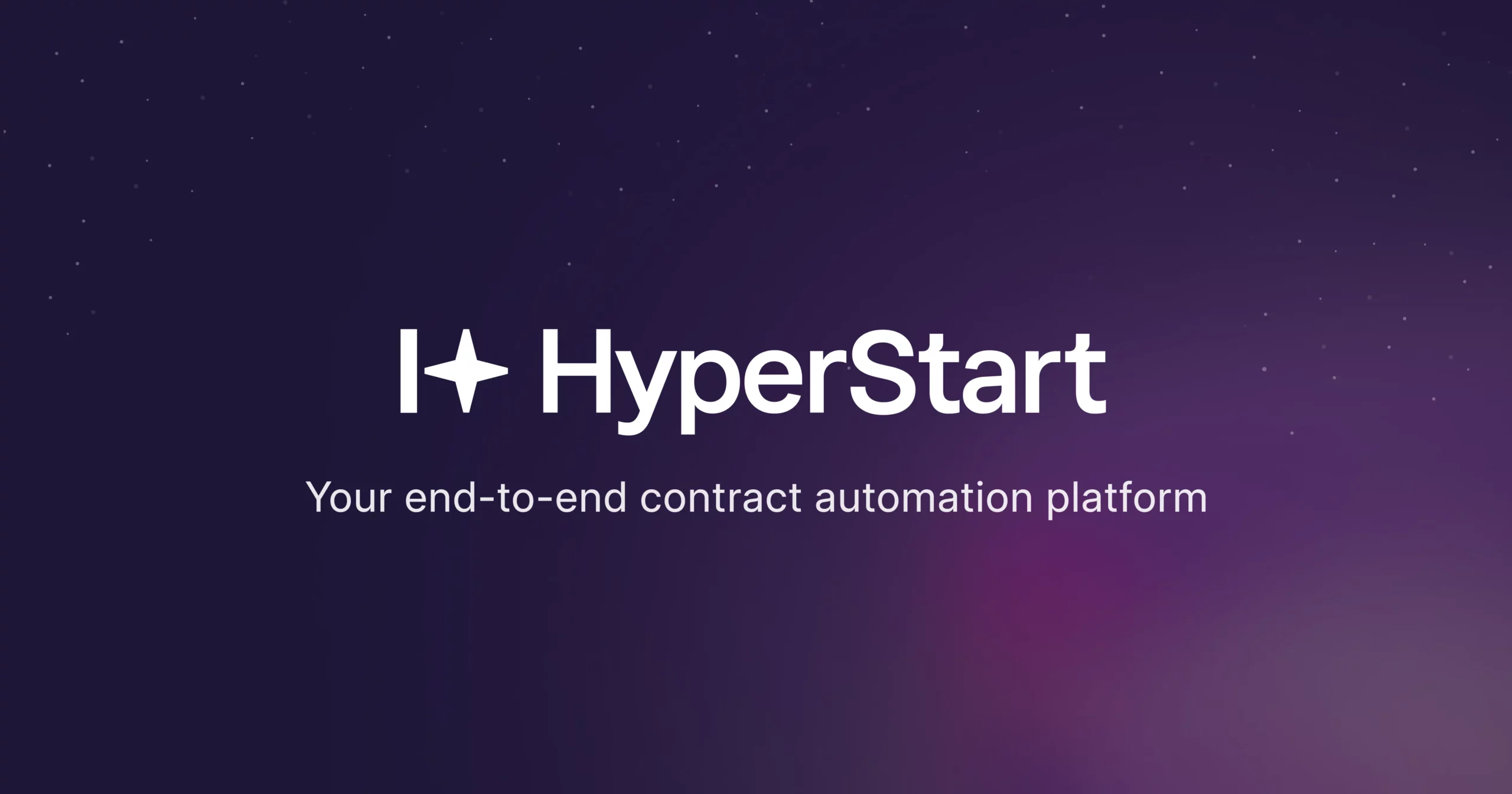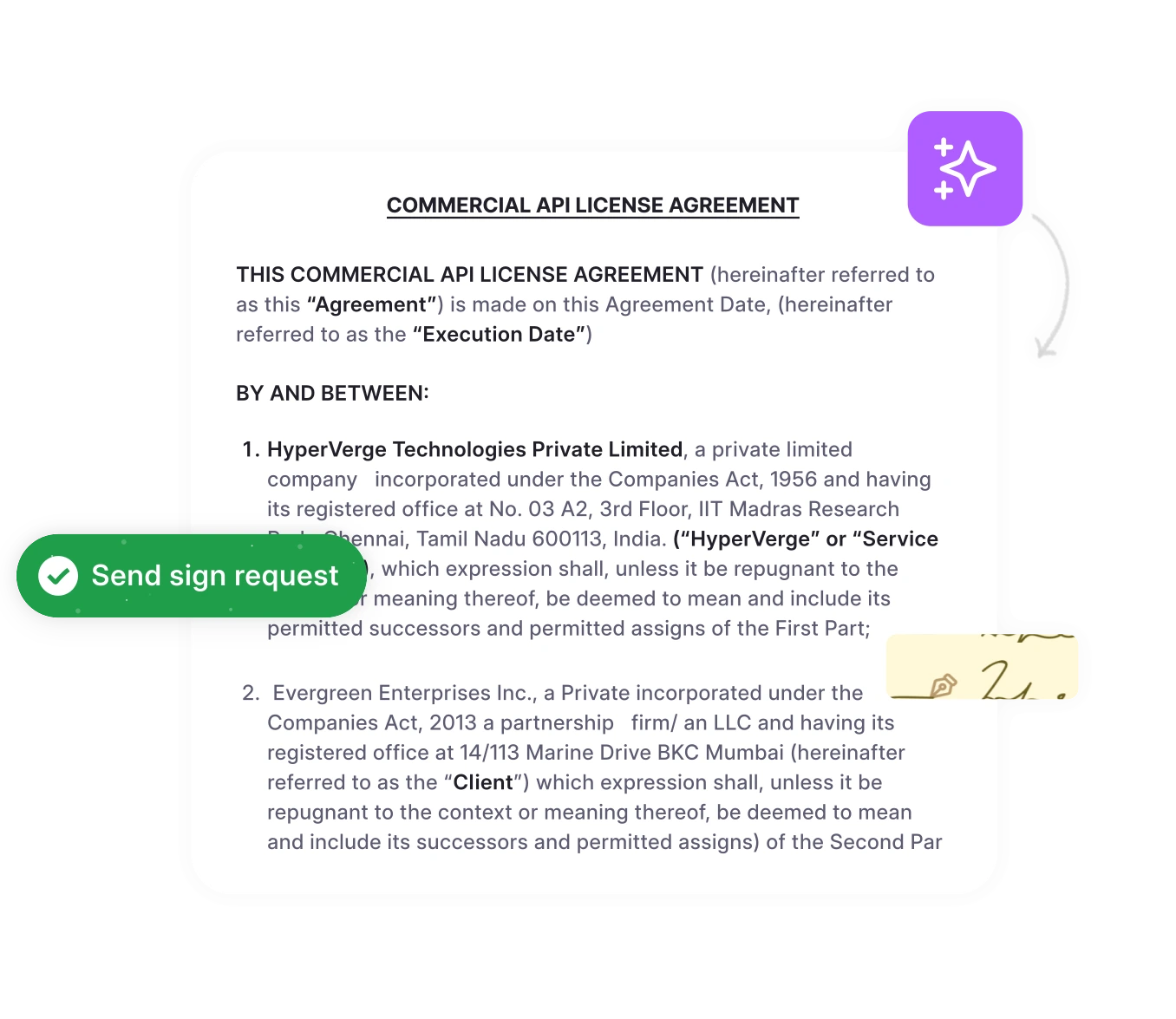Do you spend hours searching for old contracts? Do your sales, finance, procurement, and legal teams often struggle to find and access contract data when needed? If so, your contracts are likely disorganized.
Disorganized contract storage leads to inefficiencies in the contract lifecycle.
The solution?
You can make contracts easily accessible, searchable, and visible by organizing contracts systematically.
This blog is a complete guide on how to organize contracts. Read to know the best tips and strategies for effectively organizing your contract portfolio. Let’s get started.
What is contract organization?
Contract organization is the process of systematically labeling, filing, storing, and arranging contracts. Organization is more than just a contract administration task, it is an effort to make contracts easy to find. The four key pillars of contract organization are:
Accessibility: Ensuring fast retrieval via digital systems.
Security: Implementing role-based access and encryption.
Categorization: Using metadata and smart tagging for filtering.
Automation: Leveraging AI to reduce manual filing efforts.
As per WCC, companies lose up to 9% of their revenue on account of poor contract management. Contract organization solves this challenge by ensuring the contract portfolio is properly stored and available when needed.
Imagine a legal team struggling to locate an NDA signed last year. Without proper metadata tagging, finding the document could take 30 minutes.
Why effective contract organization is important?
Disorganized, scattered contracts cause contract mismanagement. Organized contracts, on the other hand, help streamline contract lifecycle management. Here’s how:
1. Improves contract visibility and trackability
Poor visibility can slow down decision-making and increase risks. Organizing contracts in a centralized, searchable system ensures you can quickly locate agreements, track key dates, and monitor contract status in real time. This helps teams stay on top of renewals, obligations, and compliance deadlines without the hassle of manual searching.
2. Simplifies obligation management and compliance
Missed deadlines and compliance issues can lead to legal troubles and financial losses. A well-organized contract portfolio helps you track key obligations like payment terms, renewal dates, and regulatory requirements. With automated reminders and structured storage, you can ensure every contract stays compliant, reducing risks and avoiding penalties.
3. Helps share information across cross-functional teams
Contracts often involve multiple departments—legal, finance, procurement, and sales. If contracts are scattered, teams waste time locating documents. A centralized contract repository with role-based access makes it easy for the right people to find the information they need while maintaining security. This improves collaboration and keeps everyone aligned.
4. Enables the use of contract data for decision-making
Contracts contain valuable business data, from pricing trends to supplier performance insights. When contracts are well-organized and structured, businesses can analyze this data to negotiate better deals, identify cost-saving opportunities, and assess risks. By turning contracts into a source of strategic insights, companies can make smarter, data-driven decisions.
5. Helps eliminate CLM bottlenecks and avoids delays
Delays in contract approvals, renewals, or negotiations can slow down business operations. An organized contract portfolio streamlines workflows by ensuring the right stakeholders have quick access to the latest contract versions. This eliminates back-and-forth emails, speeds up approvals, and streamlines the contract management process without unnecessary delays.
Organize contracts with AI
HyperStart CLM’s digital repository helps bulk-import and store contracts effectively using AI.
These are the benefits of organized, systematic contract organization. Now that you know why you should keep contracts organized, let’s explore tips and strategies for effectively organizing contracts.
8 tips on how to organize contracts effectively
Wondering what is the best contract organization strategy for your contract portfolio? Here are 8 tips to help you effectively organize your contracts:
1. Use metadata to make contracts searchable
Contract metadata is all the key information that makes up a contract—contract’s ID, contract value, counterparty’s name, execution date, expiration date, etc. Extracting contract data and storing it in a dashboard helps make contracts searchable. This way, you can organize and summarize contract information easily.
Contract management software like HyperStart CLM uses 99% accurate AI technology to auto-extract and organize contract metadata. This metadata is processed for contract tagging, filtering, and storing—thus simplifying contract organization and retrieval.
Key metadata fields you should track
Below are the essential metadata fields that make contract retrieval easier:
| Metadata Field | Purpose | Example |
| Contract Owner | Assigns responsibility for the contract | John Doe (Legal Team) |
| Contract Type | Categorizes contracts for easy lookup | NDA, MSA, Employment Agreement |
| Execution Date | Identifies when the contract was signed | 01-Feb-2023 |
| Renewal/Expiration Date | Helps track contract renewals/expiries | 01-Feb-2026 |
| Contract Value | Ensures better financial tracking | $100,000 |
| Notice Period | Helps manage contract terminations | 60 days |
| Counterparty Name | Easily identifies contract partners | ABC Corp |
HyperStart CLM auto-extracts metadata from contracts using AI, reducing manual tagging by 90%.
2. Switch to centralized, paperless storage mediums
Most organizations store contracts across different mediums—filing cabinets, drives, folders, and CRMs. Scattered contract storage makes it difficult to locate and access contracts when needed.
Switching to a centralized, paperless storage medium like a central drive or contract repository software helps maintain a single source of truth for all contracts. This type of contract storage is secure and easily accessible for all, improving contract accessibility.
3. Maintain version control and audit trails
Version and access control is an essential part of contract organization and storage. It helps improve security and eliminates redundancy in contract versions.
Controlled access, version history, and detailed audit trails all help achieve transparency and accountability in contract management. By implementing controlled access over contracts, you can ensure stakeholders have access to relevant contracts.
Additionally, during contract negotiation cycles, different parties often create copies of the same contract and redline it. Version control ensures all contract versions are maintained in a single document—further streamlining organization.
| Storage Method | Pros | Cons |
| Legacy Storage (Spreadsheets, Shared Folders, Google Drive) | Simple, familiar, low cost | No automation, difficult to search, risk of human error |
| Basic Cloud-Based CLM (Non-AI) | Centralized, access control, improves collaboration | Needs manual tagging. Lacks advanced search capabilities |
| AI-Powered Contract Management | Auto-extracts metadata, AI-driven search, smart alerts, bulk import | Needs initial setup and some training for teams |
4. Use OCR to import paper contracts
Do you have bundles of paper contracts and are not sure about how to organize them with your digital contracts? This is a common challenge for organizations that have started contract management with traditional, paper-based approaches.
OCR (optical character recognition) technology helps turn paper contracts into digital documents. Contract lifecycle management tools like HyperStart CLM use OCR to scan paper contracts and import them into digital repositories along with paperless contracts. Additionally, AI technology further analyzes these contracts to identify key information and streamline organization.
5. Allocate a unique contract ID to each agreement
A contract ID or a code is a way to give a unique identity to each contract. This helps segregate contracts based on the ID structure and format. For example, a contract ID ‘NDA-2025-040’ indicates that the contract is a Non-Disclosure Agreement, signed in 2025, and has a serial number of 40.
You can create contact ID formats suitable to your organization, depending on the types of contracts you deal with. This way, wherever someone wants to search for a particular contract in their database, they can do so with ease.
6. Implement a hierarchy-based storage strategy
Adapting a hierarchy-based approach for contract storage helps organize contracts intuitively. For example, creating structured folder and subfolder paths enables all teams—legal and non-legal—to locate contracts easily.
Here’s an example of hierarchy-based contract foldering:
Year/Contract Type/Contract
2025/Purchase Contracts/Global Corporation Limited
This way, contracts are organized in a way that anyone can locate and access them easily. Hierarchy-based contract filing also improves contract security by enabling contract managers to provide controlled access to relevant stakeholders.
7. Leverage advanced filtering systems
When managing contracts at a large scale, businesses are likely to lose visibility and trackability. In such cases, even the most efficient contract repository software can become clunky and difficult to manage. The best way to solve this challenge is to use filtering options to find contracts.
Contract management software like HyperStart CLM offers advanced, AI-based filtering and sorting options. These filters work using contract metadata to tag and find contracts. You can sort contracts based on year, value, and expiration dates. Additionally, you can use filter options to create custom views based on auto-extracted contract metadata.
8. Set up automated obligation reminders
One of the core objectives for organizing contracts is to ensure proper visibility and trackability over contractual obligations and contractual commitments. Even with the most effectively organized contract documents, there is a chance that you will end up missing obligations.
Automated reminders make contract organization easy and promote effective contract management. With auto reminders for obligations like payments, renewals, and deliverables, businesses can save time spent on juggling through contracts to find due obligations. Set auto-reminders for renewal deadlines to avoid missed obligations.
Track obligations and set alerts smartly
Auto-track renewals, expirations, and other obligations with HyperStart CLM’s smart contracting AI.
Now that you know how to organize contracts effectively, all you need is a contract lifecycle management software that helps store and organize your contract portfolio. If you are looking for such a tool, HyperStart CLM is an option worth considering.
Simplify contract organization and storage with HyperStart CLM
Organizing contracts can be tricky. With a large contract portfolio, you are likely to lose visibility over agreements. That’s why automating contract storage and organization is an excellent choice.
HyperStart CLM’s end-to-end contract lifecycle management solution helps automate contract management, storage, and organization to a single platform. A centralized repository helps maintain a single source of truth for all agreements, ensuring easy access, high visibility, and complete accountability.
HyperStart CLM’s smart AI helps retrieve contracts in 2 seconds and find key insights. The result? 80% less contract admin time, giving your teams more bandwidth to focus on what matters.
Want to know more about how HyperStart CLM can help you organize contracts? Book a demo with our team today and get started with a 14-day free trial.












